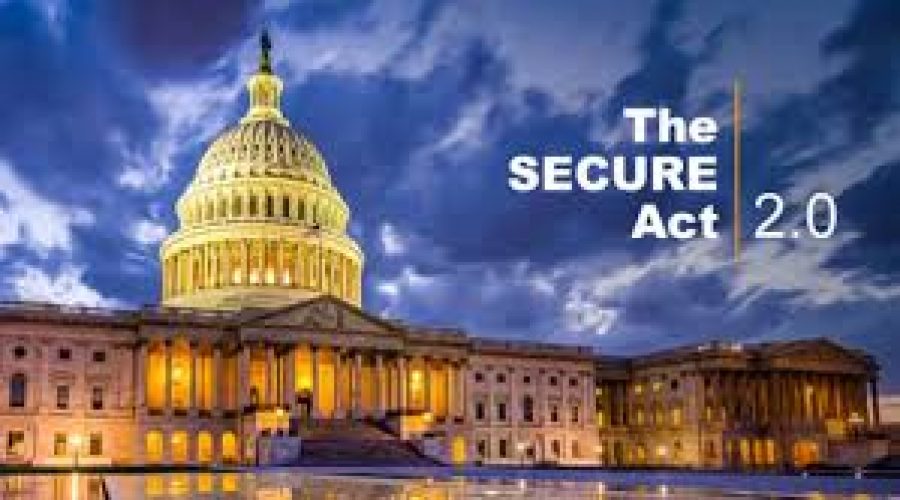You may remember that in late 2019, Congress passed the Setting Every Community Up for Retirement Enhancement (SECURE) Act, which brought a wide array of changes to retirement planning and savings. On December 23, 2022, Congress passed another retirement bill, known as SECURE Act 2.0, which expands upon the 2019 legislation. The changes brought about with the SECURE Act 2.0 are designed to boost retirement savings among workers.
The list changes that will occur due to the SECURE Act 2.0 is quite extensive, but below are some of the key provisions you should be aware of.
1. Pushing back the RMD age:
a. The original SECURE Act pushed the age at which a person must begin taking their Required Minimum Distributions (RMDs) from 70 ½ out to 72. Now, the SECURE Act 2.0 has pushed the RMD age out even further to age 73 (for those born between 1951 and 1959) and age 75 (for those born in 1960 or later).
2. Decreased penalty for missed RMD:
a. The SECURE Act 2.0 decreases the penalty for missed RMDs from 50% to 25%, which can be reduced even further (to 10%) if the mistake is corrected “in a timely manner”. This reduced penalty also applies to individuals who do not take a large enough distribution to satisfy their annual RMD.
3. Roth-related changes:
a. Starting in 2024, individuals will no longer be required to take RMDs from qualified employer Roth plan accounts (such as Roth 401(k) or Roth 403(b) plans).
b. Starting in 2023, taxpayers will be able to create and contribute to SIMPLE Roth and SEP Roth IRAs accounts. Before, these accounts were only able to include tax-deferred money.
c. Starting in 2023, employers will be allowed to make matching contributions and/or non-elective contributions to the Roth side of an employee’s retirement plan account (such as Roth 401(k) or Roth 403(b) accounts), instead of just funding the pre-tax portion. However, participants who elect to have their employer make Roth contributions into their account will be subject to income tax on those contributions.
d. Beginning in 2024, some individuals will have the ability to transfer 529 plan money directly to a Roth IRA. This provision comes with significant restrictions though, so consult with your advisor for more specifics regarding this.
4. Increased catch-up contributions:
a. In 2024, catch-up contribution amounts for IRAs, as well as employer sponsored retirement plans, will be subject to COLA. Thus, the additional contribution amounts allowed for those above a certain age will increase with inflation instead of staying at a flat amount.
5. Employer-sponsored retirement plan changes:
a. A new type of employer-sponsored retirement plan will be available, starting in 2024. This new “Starter 401(k)” plan is aimed at small businesses who don’t currently offer a retirement plan.
b. For plan years beginning after 2024, new 401(k) and 403(b) plans must automatically enroll employees when eligible.
c. Starting after December 31, 2023, employers can make a matching contribution to an employer-sponsored retirement plan account based on an employee’s student loan payment amount. Therefore, if employees cannot fund an employer-sponsored retirement plan due to student loan payments, they still can get some contributions into their retirement savings.
Use the below link to explore the changes brought about by the recently passed Secure 2.0 Act in greater detail.
